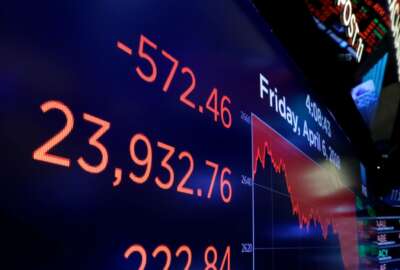
Favorite TSP fund has lowest return
The treasury securities G Fund continues to be the favorite of feds investing for retirement, while the Trump administration wants to lower its payout.
The treasury securities G Fund continues to be the favorite of feds investing for retirement even though it trails all the other funds in rate of return. And a growing number of investors appear to be shifting more into the G Fund in anticipation of a pending major market correction, according to several financial planners who manage accounts for their active and retired federal clients.
As of Feb. 28, workers and retirees had $186 billion in the G Fund which had 32.5 percent of all Thrift Savings Plan assets. Year to date the G Fund rate of return has been 0.43 percent. Next in popularity was the large-cap C Fund with $162.4 billion, or 28.3 percent of all TSP investments. Its YTD return is 11.48 percent. It tracks the S&P 500.
The least popular of all the funds, the bond F Fund held only $20.7 billion with a return of 1 percent which is more than double the G Fund rate.
The small-cap S Fund, which tracks the rest of the U.S. stock market not covered by the C Fund, was worth $60.7 billion which represents 10.6 percent of the value of the TSP as of Feb. 28. Year to date the fund return is 17.20 percent.
Investments in the international stock I Fund were valued at $24.7 billion, representing 4.3 percent of total investments in the federal 401K plan program as of last month.
Various Lifecycle funds were worth $118.3 billion, with about 20.6 percent of the total TSP investments.
Fans of the giant G Fund believe it is super-safe because it is invested in special U.S. Treasury securities. The Trump administration wants to lower the payout of the G Fund but it has been proposed before and never made it through Congress.
During the Great Recession in 2008 and 2009 tens of thousands of TSP investors, similar to their private sector counterparts saving for retirement, shifted money from stocks to “safe” — as in less volatile — instruments like the G Fund. Critics of that safe harbor strategy say it overlooks several important long-haul investing considerations. Over time, they say, inflation will overtake the returns of vehicles like the G Fund, giving people less income each year to spend in retirement. They also point out that people who went to and remained in the G Fund missed out on the impressive post-recession performance of the C, and funds which were ‘on sale’ at bargain share prices for years. And finally they say many develop what one pro calls the “G Fund” mentality where people move into treasuries and then wait, and wait and then never return to the stock market.
“People investing for retirement need to set a long-range course. Nobody can time the market. Nobody. It’s okay to look at day-to-day returns,” he said. “Just don’t act on them.”
Nearly Useless Factoid
By Amelia Brust
The reality show “Cops” first aired 30 years ago thanks to the 1988 writers and strikes in the television industry, which made the idea of a host-less unscripted show very appealing to networks.
Source: Google News Archive
Copyright © 2025 Federal News Network. All rights reserved. This website is not intended for users located within the European Economic Area.
Mike Causey is senior correspondent for Federal News Network and writes his daily Federal Report column on federal employees’ pay, benefits and retirement.
Follow @mcauseyWFED





